The Premier League season is coming to a close. The title has been won, a team has been relegated to the Championship, and several other teams are still fighting – fighting to ensure that they don’t join Norwich in the bottom three, fighting to ensure a UEFA Champions League spot, or fighting for a Europa League place. Wolverhampton Wanderers are one of those teams, as they are hoping to qualify for the Europa League for the second time in two seasons (which would be a huge accomplishment given the fact that prior to last season, the club had not competed in Europe in 39 years). They currently sit in 6th place with one game to go, but the gap between points and goal difference is so little that Wolves not only have to worry about winning their last match, but hope that Tottenham Hotspur drop points as well.
Wolves’ win over Crystal Palace helped them get the leg up over Spurs, especially since the North London club were so convincing in their 3-0 win over Leicester City the day prior. Wolves did not let that pressure them, and a routine 2-0 win allows them to be ahead of Spurs by one point, and on goal difference. It was a pretty expected win at the Molineux Stadium, with the loss putting Palace at seven consecutive losses, and only one win since the restart. This tactical analysis will look at how Palace’s tactics were undone within the first 20 minutes, and show an analysis of why Wolves’ forward players were the star of the show.
Lineups
Nuno Espírito Santo set up the home side in their typical 3-4-3 formation with Rui Patrício in net and a back three of Leander Dendoncker, Conor Coady, and Willy Boly in front of him. Matt Doherty and Jonny acted as wing-backs whilst Rúben Neves and João Moutinho were set as the midfield two. Adama Traoré, Raúl Jiménez, and Daniel Podence made up the front three.
Roy Hodgson opted for a 4-4-2, with Joel Ward, Scott Dann, Mamadou Sakho, and Tyrick Mitchell as the back four in front of Vicente Guaita in the net. Andros Townsend, James McCarthy, James McArthur, and Jeffrey Schlupp made up the midfield bank of four, while Jordan Ayew and Wilfried Zaha lead the line-up top as a strikers duo.
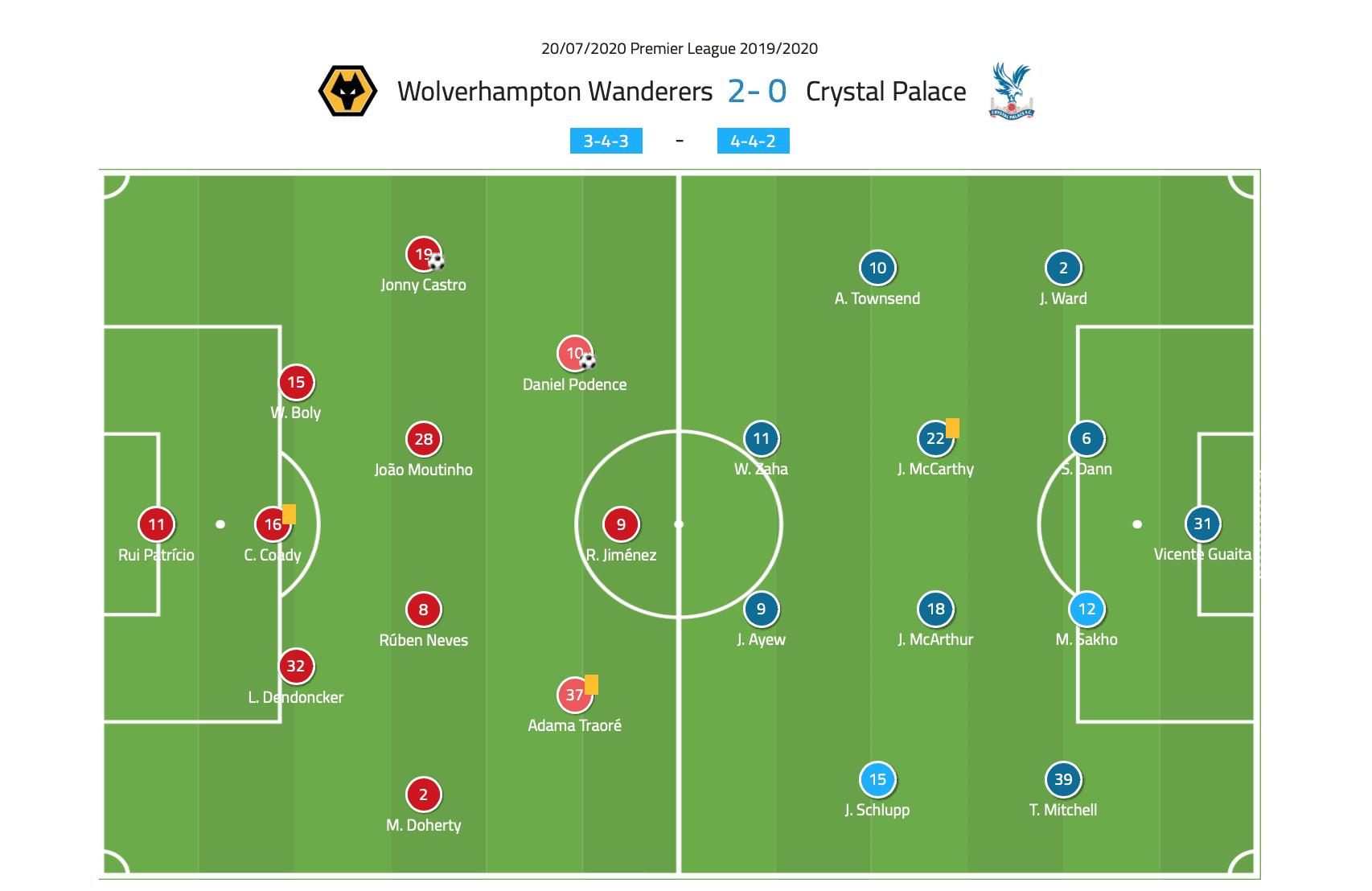
Crystal Palace start with lots of possession (for once)
In the 22nd minute, Palace suffered an early blow, not by conceding, but by losing Sakho due to an injury. The defender suffered some sort of hamstring and/or knee injury and could not continue on. The difference in Palace’s play was noticeable when he went off. Sakho’s strengths are ball interception and ball retention (a statistic that may not be as important for defenders as it is attackers, but it helps with keeping/maintaining possession).
Before his taking off, Crystal Palace were winning the possession battle over Wolves, with 61% possession in the first 15 minutes vs Wolves’ 39%. After Sakho came off, Palace’s possession plummeted, and for the rest of the match, their possession was either lower than Wolves’ or it was at equal at a 50% level.
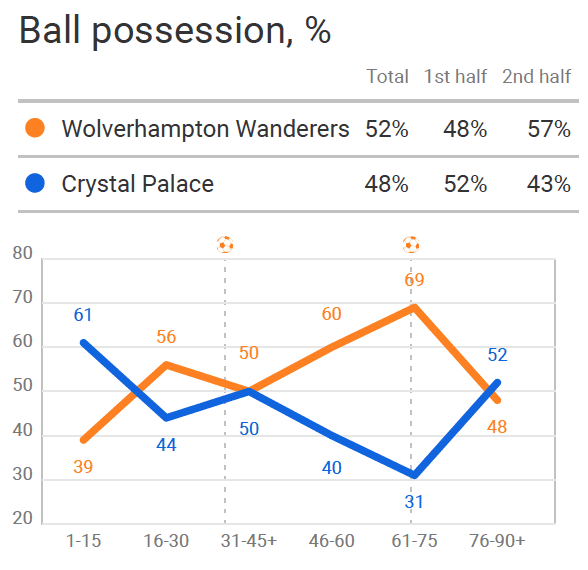
Possession is a funny statistic. A lot of the times it is regarded as a metric that shows who should have won matches. It doesn’t help that the ‘bigger sides’ usually tend to have more possession when they play, but it’s often that when the winning side had less possession, it comes as a shock. Possession doesn’t win games, though. So why does it matter that Palace’s possession decreased when Sakho was substituted off? One reason: how Sakho was using his possession was elevating Palace into attacks, something that they have struggled with severely since the restart.
Loss of Sakho early on hurts visitors
In this match, Sakho was sort of being used as an outlet. Hodgson stayed true to the regular 4-4-2 that he often likes using, a formation that is often used by teams because of its simplicity. The 4-4-2 gives a solid and reliable basic structure with clearly marked roles for each player. The formation is rigid in that it focuses a lot on being solid defensively, and catching teams by surprise on the counter. This has been the story of Hodgson’s 4-4-2 this season, but against Wolves, Palace were much more aggressive.
This can be shown by the teams’ PPDA (passes per defensive action), a statistic that can quantify the aggression and the degree in which teams employ a high press system. The lower the PPDA, the more intense the team was in their press. This season, Palace have averaged a PPDA of 19.3, meaning that, on average, for every 19.3 passes from the opposition, Palace commit a defensive action. Against Wolves, in the first 15 minutes, it was 12.0. That is a massive difference. Once Sakho came off, that number shot up to 22.0, and at one point during the match, around the 60th minute, Crystal Palace’s PPDA was at a whopping 54.0. Near the last fifteen minutes, they managed to pick it up, with a PPDA of 5.7, but after Wolves had scored two goals, and conceded none, it was likely that the home team would be more conservative to see the match out.
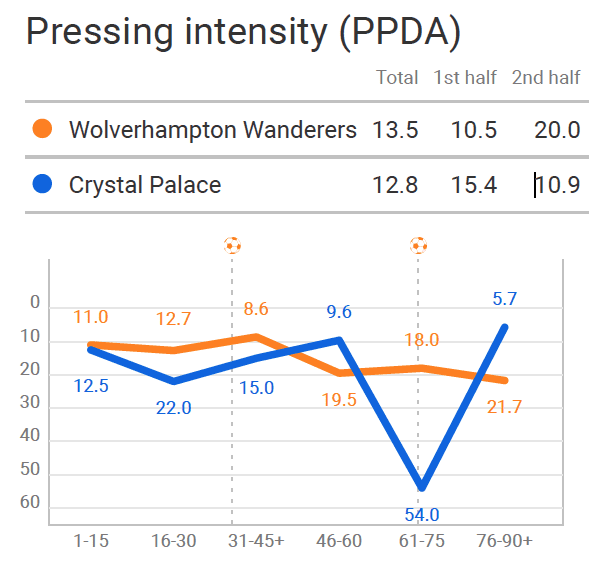
This aggressiveness is new for Palace, and Sakho’s role was to ensure that, as an outlet, Palace would not be caught out when pressing. Most teams who are used to pressing will attempt to win the ball back, and move forward, in an attempt to take advantage of the situation, and score quickly. Palace were the same, but they were a bit more cautious. When they’d win the ball back, two situations would happen. Either Wolves didn’t put much pressure on the ball, set up in their defensive shape, and Palace would begin an attacking phase, or, Wolves would attempt to regain possession. In this second scenario, Palace would use Sakho as a way to keep possession of the ball and hopefully switch the play without as much pressure from Wolves.
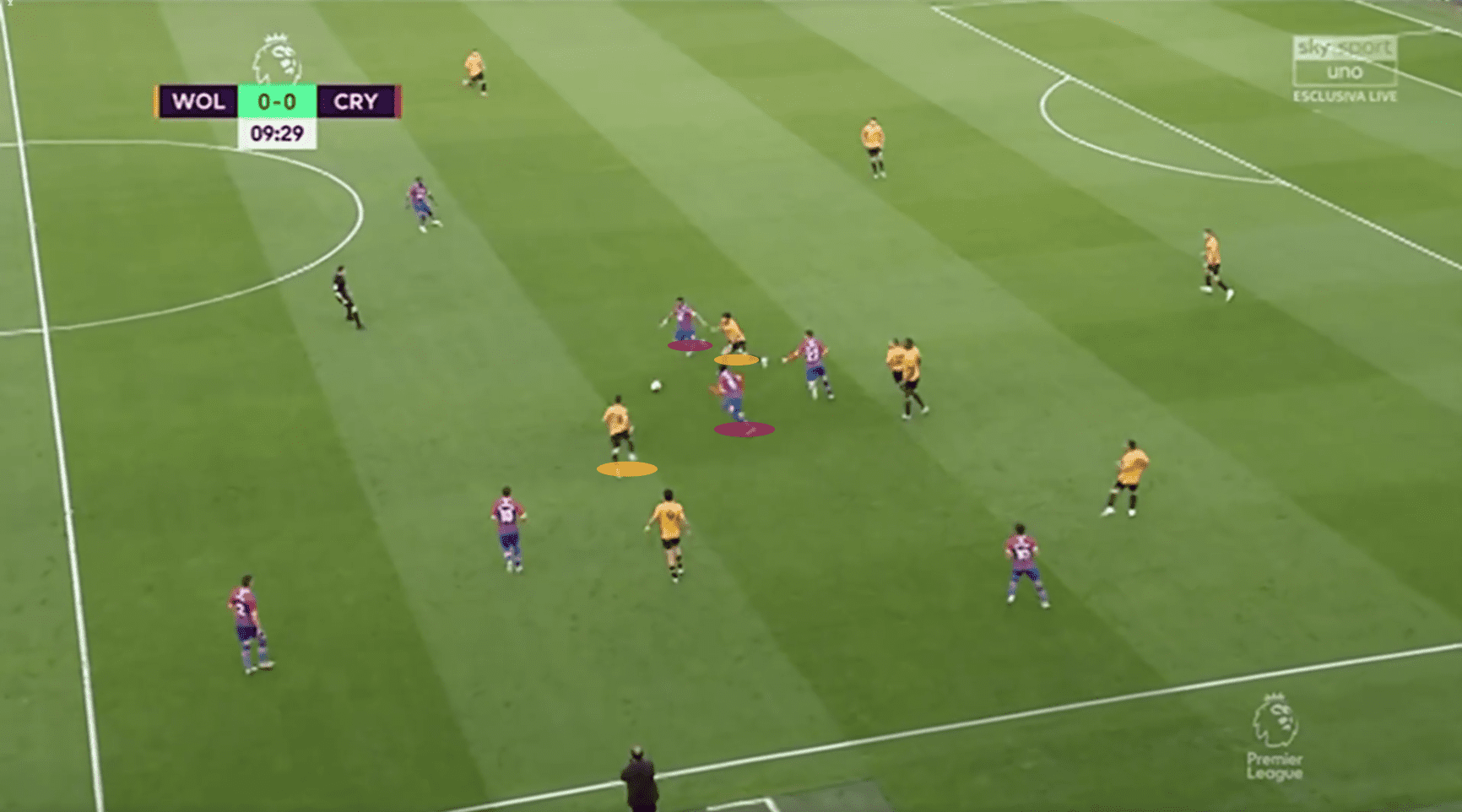
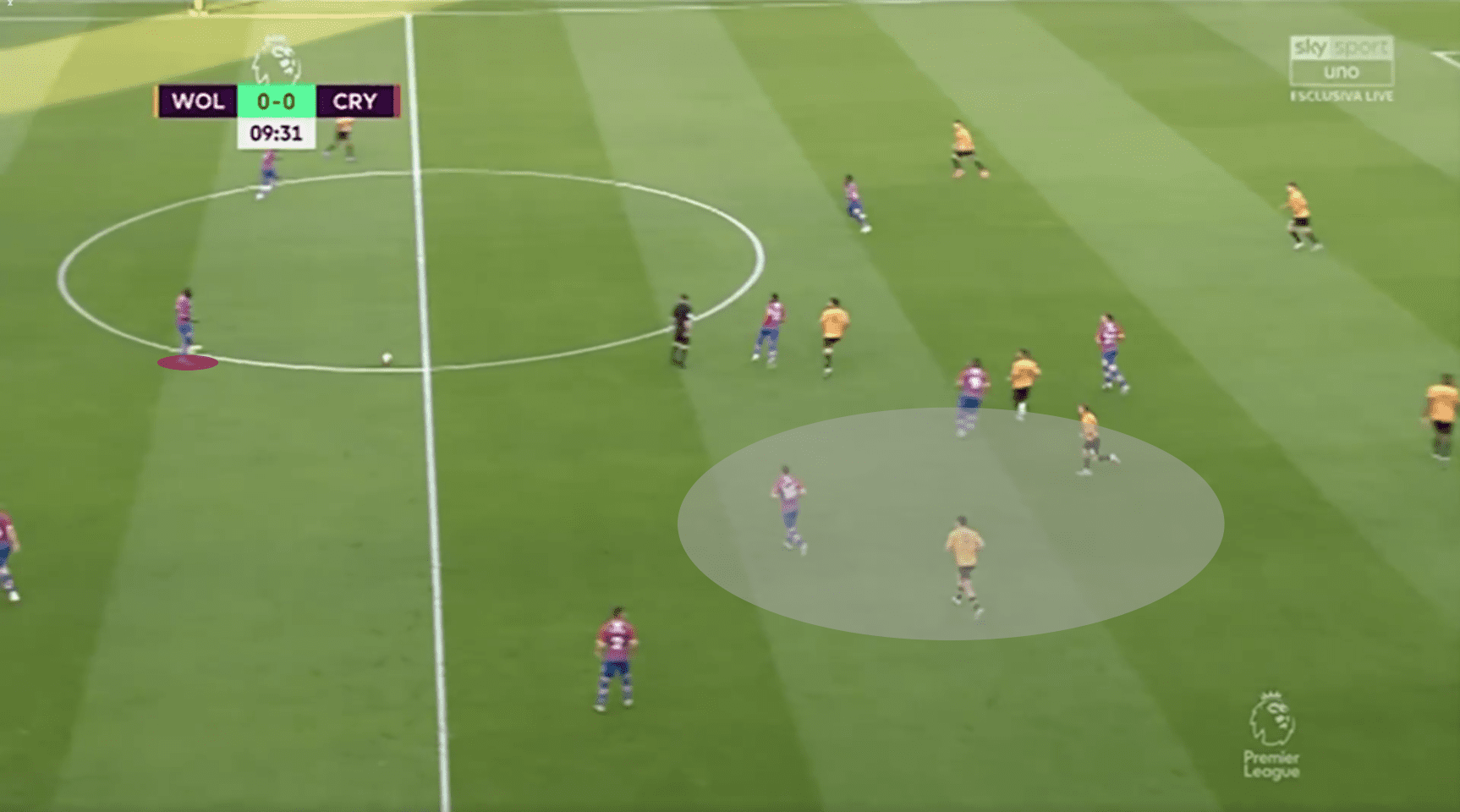
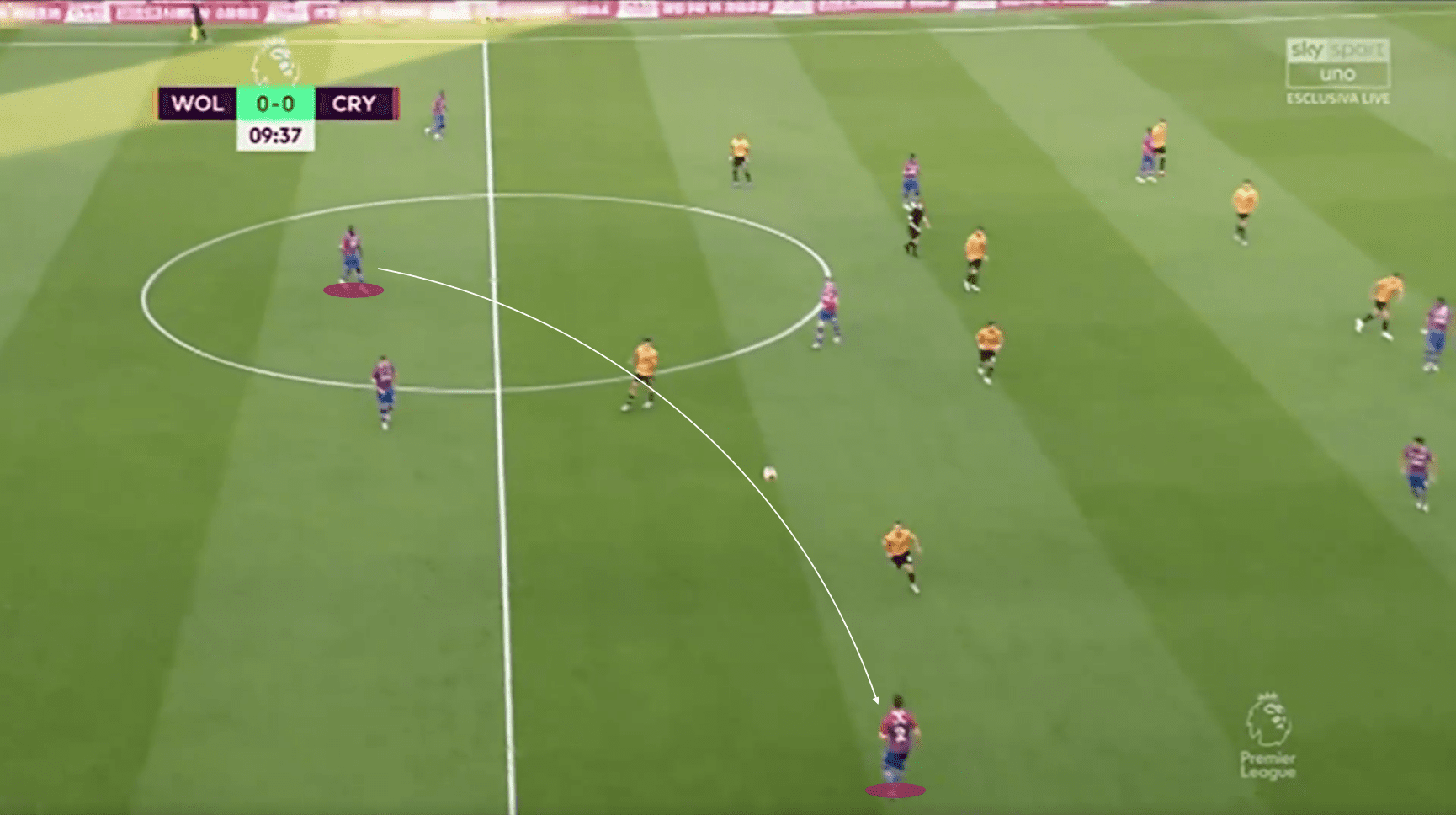
Wolves’ front three run riot
Wolves’ first 20 minutes were shaky, but once they settled into a rhythm, it was hard to see how Crystal Palace would go home with any points. The front three of Traoré, Jiménez, and Podence made all the difference.
All three players were consistently involved in the attacks. The total of 45 attacks that Wolves had were evenly spread across all flanks, with 15 on the left, 11 through the middle, and 19 on the right.
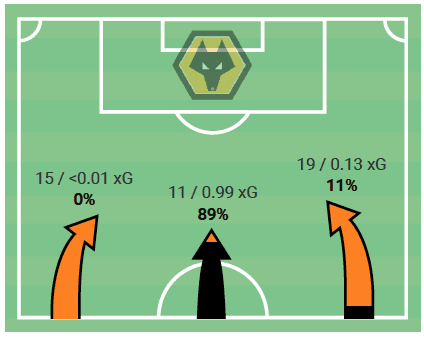
The front three really focused on beating Crystal Palace in duels in their own box and taking shots from close range, which effectively would increase their chances of scoring. Seven out of Wolves’ nine shots came from inside the box, with both goals being scored from inside the box as well.
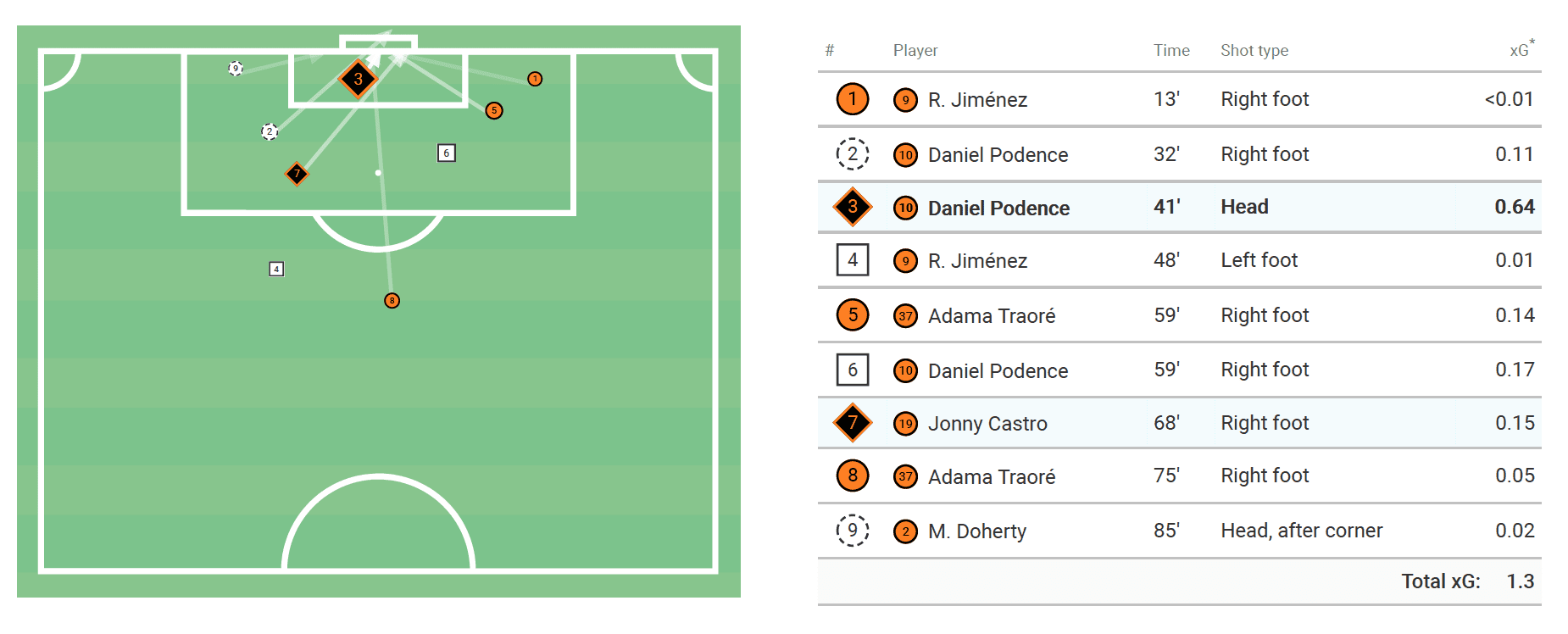
The technical ability of the front three, as well as wing-backs Doherty and Jonny really benefitted Wolves against Palace’s back four. The five of them were quick in their interplay, using short passes to make space against Palace’s backline. Palace were not only at a disadvantage numerical wise but more often than not, they were just too slow to deal with the quick passes between Wolves.
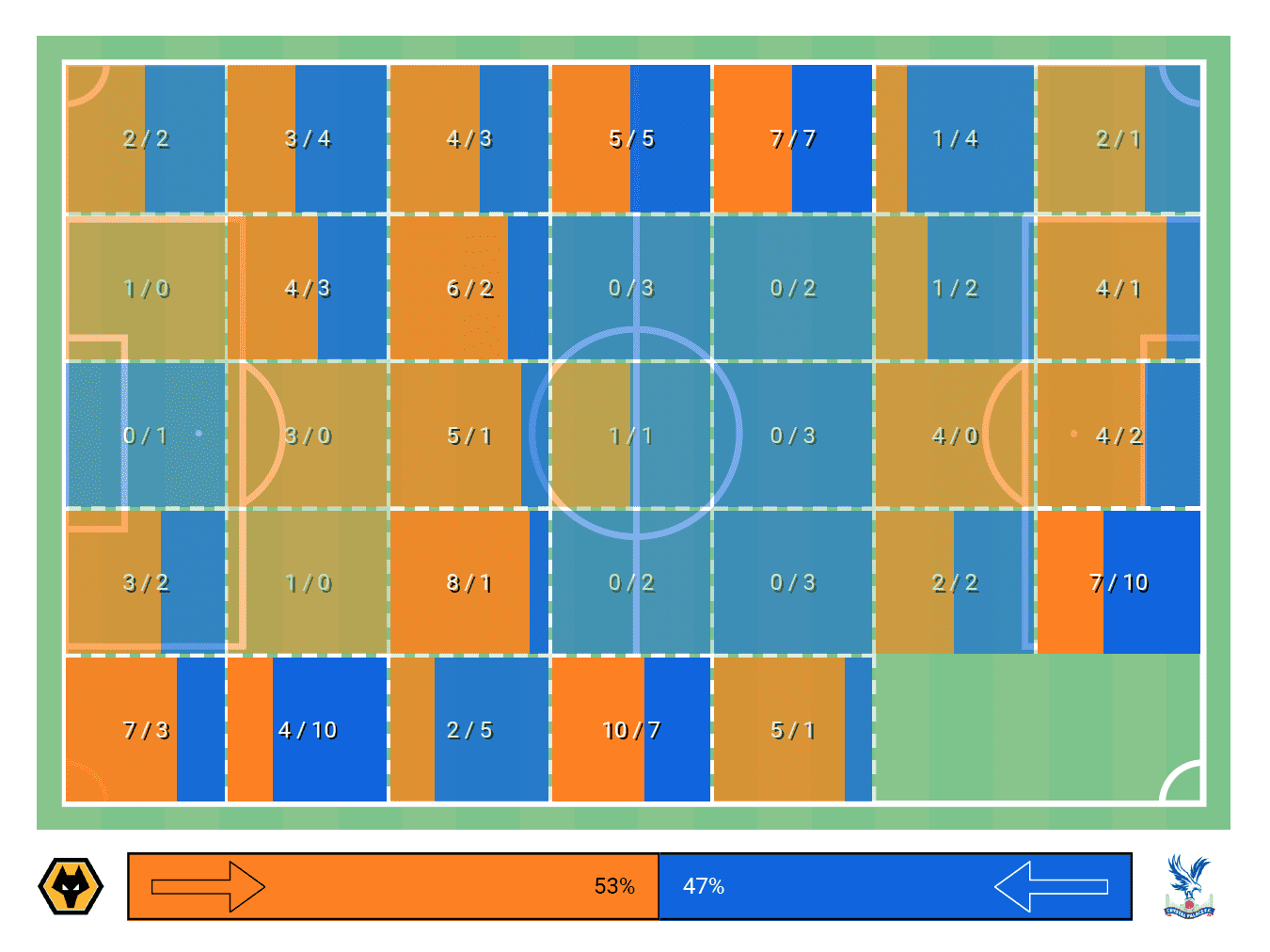
Final Thoughts
After that first strong spell from Palace, Wolves were just more proactive than their opponents. It may be because Palace have little to fight for in the Premier League this season, but they never had a plan B, and lacked any sort of fight going forward.
With this win, Wolves now have one more push before guaranteeing themselves Europa League next season, with a must-win match against Chelsea at Stamford Bridge as their last game of the season. Should Wolves drop points in London, they’d have to hope that Tottenham matches their result. If Wolves do end up finishing in sixth, it would be a fantastic season for them, one that technically wouldn’t be over, since they are still competing in this season’s Europa League competition.
Crystal Palace’s last match of the season is against Spurs, funnily enough. Despite it being back at Selhurst Park (that is if you believe that home games still hold an advantage without fans), Palace will be facing a very hungry and motivated Spurs side. Spurs have been in European competitions since the 2010 season, and have been in the Champions League since 2016. Europa League would be a step backwards, but they’d rather match that than have no European football at all next season. Palace have not been in great form for a while now, and a final season home win should be a priority.






Comments